Spinal Conditions
Our Conditions
Home>Conditions
The cervical spine consists of the bony vertebrae, discs, nerves and other structures. The vertebrae, which stack up to create your spinal column, surround and protect your spinal cord. The discs are located between each vertebra. Discs consist of a fibrous outer layer (annulus) surrounding a gelatinous center (nucleus). They allow motion between vertebrae, act as shock absorbers, and distribute the stress and strain placed on your spine.
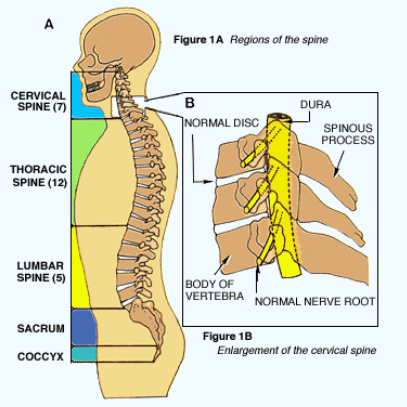
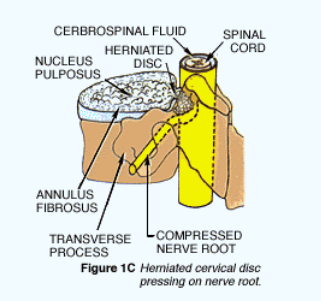
When a disk weakens, the outer layer may not be able to hold the center of the disc in place and the disc may “bulge” which can irritate nerves. In advanced cases it may actually rupture (herniate) through the annulus and pinch the spinal nerves. This can cause numbness, weakness, and/or pain which radiate down the arm into the hand; or can cause difficulty with fine motor movements. If pressure on the spinal nerves continues, nerve damage can occur and cause either numbness or muscle weakness as well. Most patients with herniated discs do well without surgery; however a small percentage may require surgery. There are rare circumstances in which some patients require immediate surgery. These include progressive neurologic loss such as increased weakness or paralysis.
Conservative Management: Many herniated discs get better with time, anti-inflammatory medications, and physical conditioning. Cervical traction or steroid injections may help relieve the pain and inflammation around the nerves. If these attempts at conservative care do not relieve symptoms or if there is progressive neurological damage, surgery may be necessary.
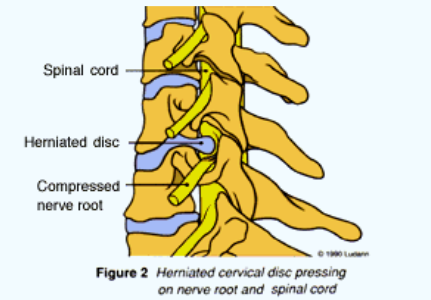
posterior cervical laminoforamenotomy is an operation to remove the pressure on a nerve caused by a herniated disc in the neck. This surgery involves a 2–3 inch incision on the back (posterior) of your neck. The doctor protects the nerve roots and safely removes the herniated disc, eliminating pressure on the nerve. The purpose of this surgery is to relieve arm/hand pain, numbness, weakness, or lack of coordination and fine motor control caused by pressure on the nerves. The success rate of relieving arm pain is very high.

Surgery and anaesthesia involve stresses to many organs and tissues in the body. Incisions and handling tissues during surgery can result in many problems. The benefits of surgery must be carefully weighed against these risks. Some more common or serious problems are listed here.
Spinal Cord or Nerve Root Injury: Permanent injury to the spinal cord or nerve roots is extremely rare. It is not unusual, however to experience minor temporary tingling, numbness, weakness or pain which resolves over several weeks. All precautions will be taken but rarely, more serious nerve injuries may occur, effecting walking, balance, bowel or bladder functions.
Failure of fusion: On rare occasions the bone graft does not heal properly. The likelihood of this is greatly increased by smoking or using nicotine of any kind. This can cause the hardware to fail, and the bone graft may shift. In these cases, additional surgery may be needed. For this reason we recommend quitting smoking at least one month before surgery and refraining from smoking for at least 3 months after surgery. Smoking also causes more rapid degeneration of the spine, and continuing to smoke increases the likelihood of requiring treatment at another level of the neck.
Dural Tear: Leakage of spinal fluid can occur due to a tear in the tissue (called the “dura”) holding the spinal fluid and containing the nerves. On rare occasions additional surgery may be needed. Infection: Infection is always a post-operative risk and occurs in approximately 1–2% of surgical patients, varying by surgery type.
Infections may be superficial or deep into the bone. You are given antibiotics before and after the surgery to help prevent this complication. Please follow the instructions for wound care to help prevent infection.
Airway Compromise: Extremely rarely swelling within the neck can cause difficulty with breathing. If this occurs in the hospital, a breathing tube may need to be kept in place. If this occurs at home, it is an emergency and requires transportation to an emergency room.
Other complications: Other possible complications include blood clots, pneumonia and complications related to the general anesthesia. Persistent hoarseness and/or swallowing problems may last for several weeks. Please call us if this persists.
Adequate rehabilitation is crucial for a successful result. Many patients with spinal injuries have suffered from spinal pain for some time. This may result in considerable weakening of the spinal muscles due to lack of exercise, so you should return to your normal activities slowly.
The primary form of rehabilitation after surgery is an aggressive walking program. You should start immediately after discharge, walking more and more each day. In general, we recommend two to three episodes of exercise per day. The average patient can be walking 15 minutes twice a day by their first postoperative visit and 30–40 minutes twice a day by six weeks after surgery. Walk more if you are so inclined!
Patients routinely experience a dramatic, remarkable reduction in their arm pain. If the nerve has been irritated for a long time, then a more gradual reduction of the arm pain is to be expected. As the nerve heals, expect tingling or a warm feeling. Depending on how long the symptoms have been present, strength is usually the second symptom to improve. Numbness in your arm / hand is the last to resolve and, if present for long enough prior to surgery, may be permanent.
Neck pain associated with the incision is largely improved within two to three weeks. Increased pain with prolonged sitting and driving is also expected and, for safety reasons, we recommend refraining from driving for approximately three weeks.
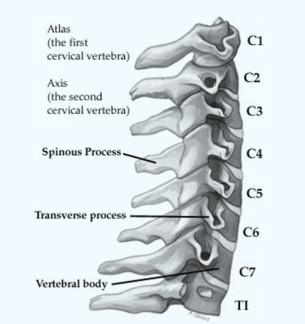
At your first post-operative visit we will inspect your wound and remove any stitches as necessary.

Do not soak your wound. No bathtub, swimming, or hot tub, etc. until you have received permission from your physician. Do not remove any “butterfly” bandages right next to your skin. These are designed to get wet and fall off in the shower over time.
To shower: simply remove the outer gauze bandage and shower as usual. Blot the incision dry, and then cover it with a clean, dry bandage.
Prescribed narcotic pain medication may cause some constipation. To help with this:
If you need a refill on your pain medication, please have your pharmacy fax the refill request to our office 1 (888) 636-7840 and please allow up to 48 hours for the request to be processed. Refills on pain medication will not be filled after hours or on weekends or holidays. Be aware of how much pain medication you have, & obtain refills before you run out.
Avoid twisting your neck to the extremes, and avoid forced bending of your neck either forward or backward. Gentle range of motion of the neck is OK. Do not drive until you have received permission from your physician.
We’re proud to share our results from our outstanding spine surgeries performed to date. Although these results show that the Robotic Spine Institute of Las Vegas provides some of the best spine care and treatment in the world, we are consistently evaluating and improving our methods to treat cervical disc, lumbar spine and other medical conditions in the Las Vegas, Henderson, and North Las Vegas and surrounding areas.
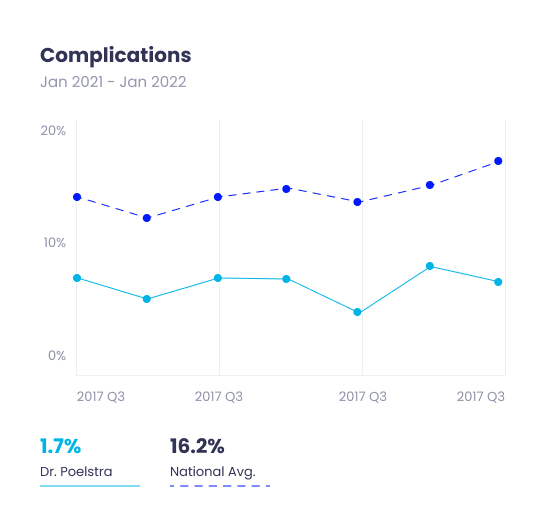
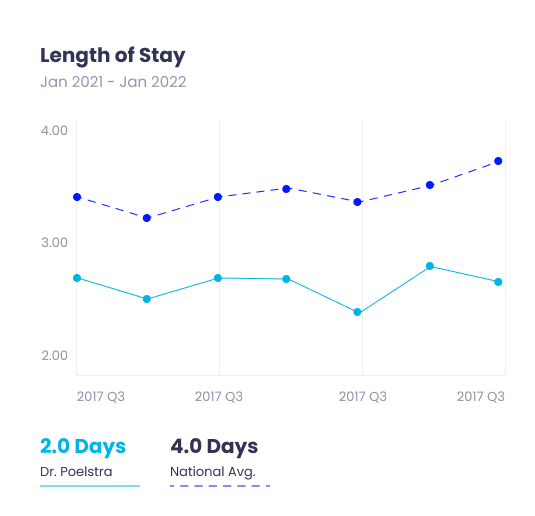
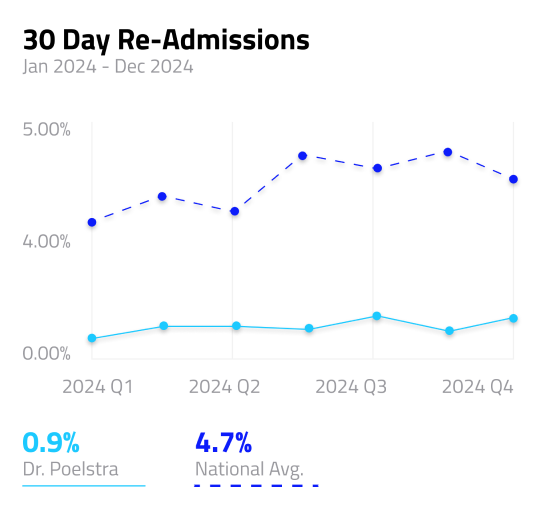
speak with one of OUR TEAM MEMBERS